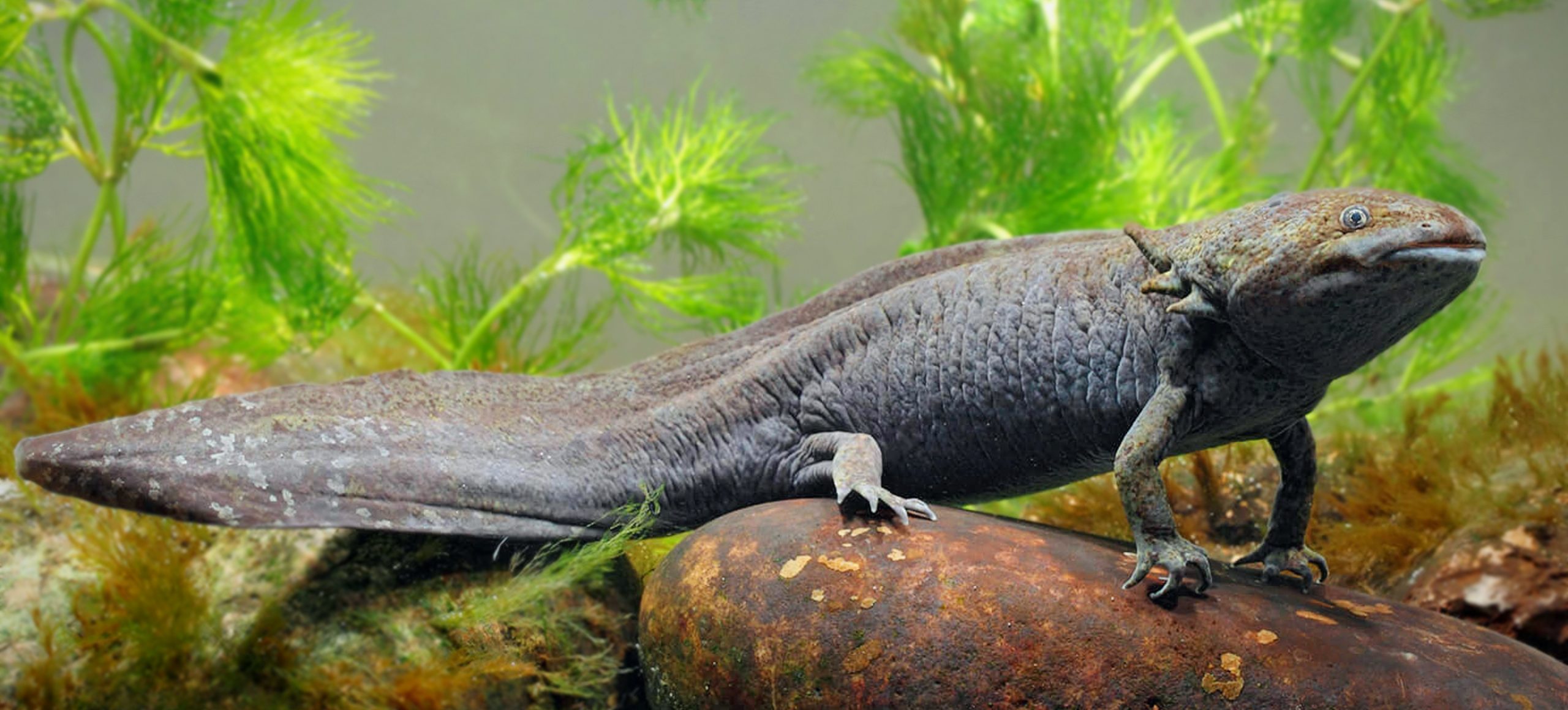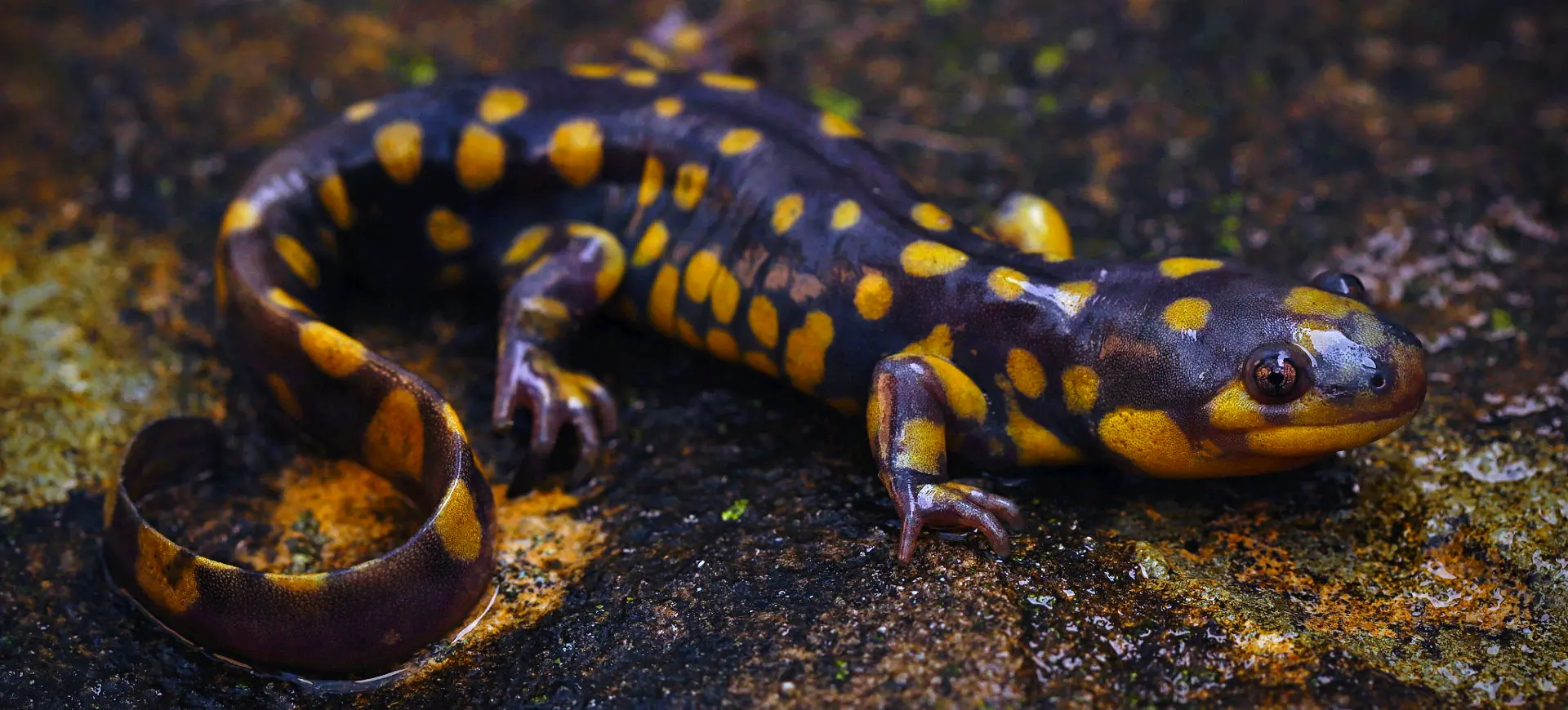Overview
The Western Tiger Salamander is a large amphibian native to North America. Known for its distinctive markings resembling a tiger, the creature boasts stripes or blotches in varying shades of yellow or tan on a darker background. These salamanders belong to the mole salamander family and are highly adaptable to various environments, ranging from woodlands to grasslands.
Adults can reach sizes of up to 13 inches in length, making them one of the largest terrestrial salamanders. Although primarily terrestrial, they are also well-suited to aquatic habitats, particularly during the breeding season. In the larval stage, they are entirely aquatic and undergo metamorphosis to adapt to a terrestrial lifestyle.
They are generally nocturnal animals, preferring to hunt during the night for insects, worms, and small amphibians. Their nocturnal habits help them maintain moisture and avoid daytime predators. They are also known for their ability to regenerate lost body parts, including limbs and portions of their tail.
Taxonomy
Kingdom
Phylum
Class
Order
Family
Genus
Species
Sub Species
Type
Physical Description:
The Western Tiger Salamander has a robust, stocky build with smooth skin and a broad head. Their colors and patterns may vary depending on the subspecies and geographical location but generally consist of dark bodies with lighter stripes or spots. These patterns are more vivid during larval and may fade as the animal matures.
They have short, stout limbs and a relatively long, compressed tail. Their eyes are prominent, and they possess a wide mouth, enabling them to consume a variety of prey. The males and females are similar in appearance, although males are usually slightly larger.

Lifespan: Wild: ~15 Years || Captivity: ~25 Years

Weight: Male: 4.5 - 8.0 oz (128 - 227g) || Female: 4.0 - 7.5 oz (113 - 212g)

Length: Male: 7 - 13 inches (17.8 - 33 cm) || Female: 6 - 12 inches (15.2 - 30.5 cm)

Height: Male: 3.5 - 4.5 inches (8.9 - 11.4 cm) || Female: 3 - 4 inches (7.6 - 10.2 cm)

Top Speed: 2 mph (3.2 km/h)
Characteristic:
Native Habitat:
The Western Tiger Salamander is native to North America and is predominantly found in the western United States and parts of Canada and Mexico. They are highly adaptable and can survive in various habitats, including grasslands, woodlands, and semi-arid regions.
They prefer areas close to water bodies like ponds, lakes, and slow-moving streams, particularly during the breeding season. The availability of suitable breeding grounds and appropriate hiding spots like rocks and logs is crucial for their survival.
Climate Zones:
Biogeographical Realms:
Continents:
Countries:
Diet:
Diet & Feeding Habits:
The Western Tiger Salamander has a diverse diet, primarily consisting of insects, earthworms, and smaller amphibians. They use a “sit-and-wait” approach to hunting, remaining motionless until prey reaches range. Once the prey is within striking distance, they use their sticky tongue to quickly snatch it.
In the larval stage, their diet consists primarily of aquatic invertebrates, including insect larvae and zooplankton. As they mature and transition to a terrestrial lifestyle, their diet becomes more diverse. It’s worth noting that they may also resort to cannibalism when food resources are scarce.
Mating Behavior:
Mating Description:
The Western Tiger Salamander’s breeding season generally occurs during the late winter to early spring, coinciding with the availability of suitable aquatic habitats. Males usually arrive at the breeding ponds first and deposit spermatophores on the pond floor.
Females then pick up these spermatophores to fertilize their eggs internally. After fertilization, females lay the eggs in water, usually attaching them to submerged vegetation. The number of eggs can range from a few dozen to several hundred, depending on the individual.
Reproduction Season:
Birth Type:
Pregnancy Duration:
Female Name:
Male Name:
Baby Name:
Social Structure Description:
The Western Tiger Salamander is generally solitary and territorial. They only gather in groups during the breeding season, where competition for mates can be fierce, particularly among males.
Females also protect their egg clutches, often staying nearby until the eggs hatch. Once hatched, the larvae may form loose aggregations but generally disperse upon reaching the juvenile stage to establish their territories.
Groups:
Conservation Status:
Population Trend:
The Western Tiger Salamander is currently listed as “Least Concern” on the IUCN Red List due to its widespread distribution and stable population trend. While exact population numbers are unknown, they are considered abundant in areas with suitable habitat.
However, like many amphibians, they face habitat destruction, pollution, and disease threats. Some local populations have been severely impacted, but overall, the species is considered to be at low risk of extinction in the short term.
Population Threats:
The main threats to the Western Tiger Salamander include habitat destruction due to agricultural expansion and urban development. Pollution from pesticides and fertilizers can also harm both adult and larval stages.
Additionally, salamanders are at risk from diseases like chytrid fungus, which has severely impacted amphibian populations globally. Invasive species also pose a threat, as they can outcompete the salamanders for resources or directly predate upon them.
Conservation Efforts:
Conservation efforts for the Western Tiger Salamander are mostly localized, focusing on habitat restoration and pollution control. Some populations are protected within national parks or conservation areas, offering them some respite from habitat destruction.
Research is ongoing to understand the impact of diseases like chytrid fungus on the species. Public education and awareness campaigns are also being conducted to inform people about preserving natural habitats for these and other amphibians.
Additional Resources:
Fun Facts
- Western Tiger Salamanders can regenerate lost limbs and tail parts.
- They can live up to 25 years in captivity, which is unusually long for an amphibian.
- They are known to eat their shed skin and can resort to cannibalism when food is scarce.
- In some high-elevation locations, the species may remain in the larval form for their entire lives, a condition known as neoteny.
- They have a variety of vocalizations, including whistles and chirps, which is uncommon for salamanders.
- The coloration and patterns of the salamander serve as a warning to predators, signaling that they are unpalatable.
- They have a lungless respiratory system and absorb oxygen through their skin and the lining of their mouths.
- Despite their robust appearance, they have delicate skin sensitive to environmental changes.
- They migrate considerable distances to return to their natal ponds for breeding.
- Different subspecies of Western Tiger Salamander have adapted to various habitats, from deserts to alpine meadows.














